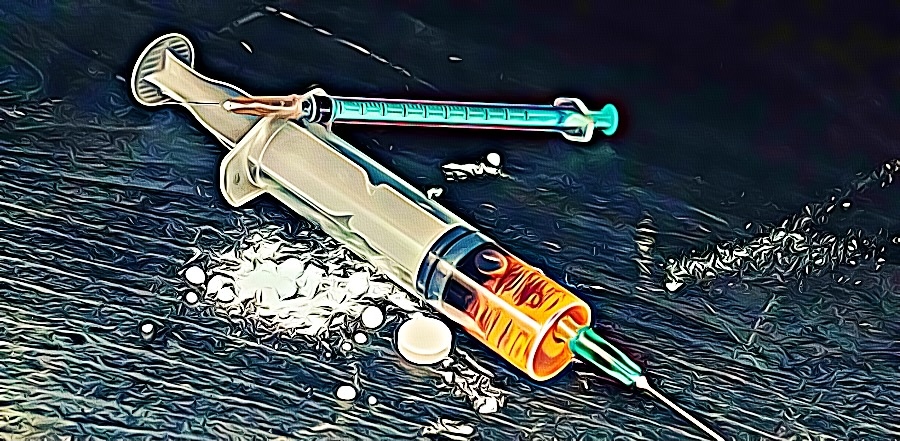The users of speedball don’t always know what the constituents in their drug-mixed cocktails are, unlike those of other substances. It should be obvious that this combination can be hazardous.
Speedballs are a dangerous concoction that can have disastrous results for those who attempt them even once.
People who battle substance addiction and abuse frequently spend time looking for their next high in the hopes that it will be larger and better than the last.
They may occasionally combine one or more drugs in an effort to obtain this supreme high. In other cases, they might mix medications to lessen the effects of one or both treatments.
Although they may be successful in achieving the desired high, they put themselves at risk of suffering the negative effects of each drug alone and the negative and potentially hazardous interactions between the two.
Extreme emotional and physical injury, overdose, or even death, can be the outcome.
More details on the dangers of using speedball medications are provided in the following sections.
Effects of Speedball Drugs
The adverse effects of both medicines, such as the following, may be felt by a person injecting a speedball:
- Anxiety
- Panic
- Paranoia
- Confusion
- Hypertension
- Rapid heart rate
- Difficulty speaking or thinking clearly
- Cognitive dysfunction
- Stupor
The mixture could be lethal. Speedball users have passed away due to stroke, aneurysm, chest pains, or respiratory depression that is fatal.
The fact that cocaine wears off more quickly than heroin is one of the major dangers of using speedballs.
Because of this, if a person consumes more heroin than their body can tolerate and the stimulant effects of cocaine wear off, they may suffer from an opioid overdose and respiratory failure.
Dangers of Drug Combination
Although the combined subjective effects of heroin and cocaine may vary from person to person, they are likely to have stronger reinforcing effects than either drug used alone.
There is an interaction between dopamine release associated with mu-opioid receptor activation and cocaine-directed increases in dopamine activity in important brain areas.
This results in an extraordinarily potent reinforcing effect that drives users to inject this drug combination repeatedly.
It can be exceedingly hazardous because even one speedball injection can be fatal for a variety of reasons. The dangers of mixing heroin and cocaine are numerous and serious.
Composition of Speedball Drugs
Frequently administered by syringe, speedball is a mixture of heroin and cocaine. Any mixture of the pharmacological classes opioid and stimulant is frequently referred to as a speedball.
In particular, heroin and cocaine are the components of the traditional speedball; both are dangerous illegal narcotics on their own, never mind combined.
Some people will create their own speedballs by mixing other drugs; examples of such combinations include adding stimulants like methamphetamine or amphetamine and opioid pills in place of heroin.
In a speedball, heroin and cocaine are combined and injected all at once, causing the effects to start acting quickly and intensely.
Overdose Risks with Heroin and Cocaine
On their own, heroin and cocaine have a number of negative effects that are frequently brought on by the way these substances are ingested.
Cocaine is typically snorted, which can cause persistent lung damage, frequent nosebleeds, and nasal septal collapse.
Heroin is typically administered via injection, which may result in a variety of adverse reactions. Injecting heroin can result in abscesses (pus-filled pockets of tissue) and collapsed veins.
The most likely methods of speedballing will be injection, snorting, or both. While it can lessen other negative effects, problems brought on by injecting or snorting will still exist.
There may be further harmful side effects as well.
Risk of Overdose
When speedballing, there is a higher chance of overdosing on heroin or cocaine. Ingesting significant doses of the medications without experiencing the desired results is possible since the effects of the two drugs cancel each other out.
When speedballing, respiratory failure is substantially more likely. Heroin’s full effects will likely start to manifest later than cocaine because cocaine wears off much more quickly.
Once the effects of cocaine wear off, respiratory depression and respiratory failure can all occur suddenly and severely.
The central nervous system is impacted by stimulant and opioid overdoses, which increases the risk of heart attack, stroke, and aneurysm.
Signs of a Speedball Overdose
The greatest approach to avoiding a speedball overdose death is to be aware of the symptoms. The indicators of cocaine or heroin overdose are listed below:
- Rapid or erratic heartbeat
- Body temperature rising
- Anxiety
- Breathing more slowly
- Confusion
- Hazy mental clarity
- Lack of coordination and mobility
- Unresponsiveness
Users of speedball are at an increased risk of overdose since heroin and cocaine are frequently combined with other drugs like fentanyl. In their pursuit of this high, users disregard the long-term effects their habit may have on their heart, lungs, and brain.
Treatment for cocaine or opiate addiction can help prevent speedball overdose and other negative side effects.
Sensations Felt in a Speedball Overdose
Speedballing is hazardous since it makes the body process more drug dosages at once. Combining stimulants and depressants causes a “push-pull” reaction in the body that may cause overdose-like physical symptoms.
While heroin makes breathing difficult, cocaine causes the body to use more oxygen. This puts stress on the heart, lungs, and brain, raising the risk of disorientation and poisoning.
The brain and heart have trouble getting the oxygen they require to protect the body from the effects of cocaine when speedballing.
Additionally, speedballers constantly inject themselves more frequently than individuals who take both drugs separately since the adverse effects of cocaine wear off quicker than those of heroin.
A speedball user who has overdosed may experience confusion, agitation, paranoia, and lack of coordination. A person high on speedball may also have respiratory depression, a disease characterized by sluggish or irregular breathing due to heroin’s effects on respiration.
Future cognitive issues may arise from inadequate oxygenation of the brain, just as inadequate oxygenation of the heart may impair the proper operation of other organs.
Although many users think the negative effects of heroin and cocaine balance each other out, using them separately or together can exacerbate symptoms. Therefore, those who are addicted to these narcotics should receive a medical detox.

Long-Term Side Effects
The cumulative overdose danger for people who regularly inject speedballs is a big worry. However, injecting heroin and cocaine has additional long-term potential negative effects, including but not limited to the following:
- Injection-related abscesses, cellulitis, and tissue necrosis
- Using injections to contract HIV or other bloodborne illnesses
- Particles injected cause vascular irritation and blood vessel obstruction
- Malnutrition and anorexia
- Hemorrhagic or ischemic stroke
- Other organ damage from ischemia
- Gastrointestinal tract ulcers
- Liver and kidney damage
- Heart muscle swelling
- Aortic dissection
- Chest pains
- Seizures
- Permanently impaired cognitive function
- Elevated possibility of getting Parkinson’s disease
- Issues related to impulsivity
- Addiction
Assistance for Speedball Abuse or Dependence
According to a report from the National Institute on Drug Abuse, one difficulty in treating speedball consumption is that therapies for heroin addiction are only marginally helpful for people who use speedballs.
There is no FDA-approved treatment to treat cocaine addiction, and drugs designed to treat opioid addiction only won’t treat cocaine addiction.
But medication is simply one aspect of treating addiction; behavioral therapy actually forms the basis of care even when medication is recommended.
Cognitive-behavioral therapy is one type of treatment that can help you understand why you use heroin and cocaine, help you change unhelpful attitudes, and teach you healthier coping mechanisms.
Conclusion
Given the numerous risks associated with injecting speedballs, persons who are abusing this drug combination urgently require addiction therapy. Making an effort to get help could help you or someone you care about live.
Source: https://www.justice.gov/opioidawareness/opioid-facts

